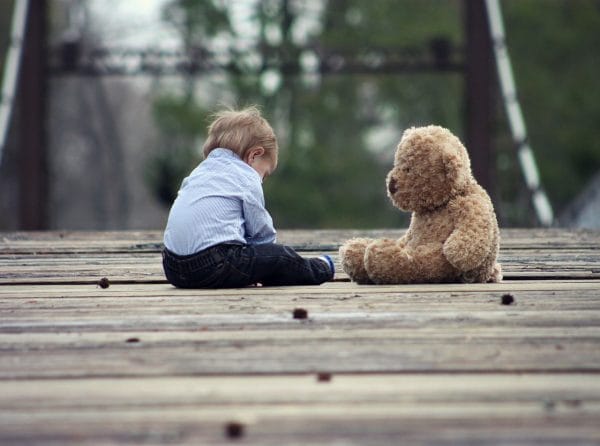How to Transition from Authoritarian Parenting to Positive Discipline
Transitioning from authoritarian parenting to positive discipline is a journey many parents consider. Authoritarian parenting is strict and demanding, while positive discipline focuses on teaching and guiding. This change can help children grow into responsible and kind adults. Parents might wonder how to make this shift smoothly. Understanding both styles and learning new strategies will make the transition easier. This article will guide you step-by-step to embrace positive discipline in your home.
Understanding Authoritarian Parenting

Authoritarian parenting is very strict. Parents set many rules. They expect kids to follow without question. This style often uses punishment to control behavior.
Children in these families might feel scared. They may worry about making mistakes. Love and warmth are often missing. Kids might not learn how to solve problems on their own.
Authoritarian parents believe they know best. They do not ask for children’s opinions. These parents focus on obedience over understanding.
Some studies show that this style can lead to low self-esteem. Kids might struggle to make friends. They may also become rebellious as teenagers.
Examples of authoritarian parenting include strict bedtimes and no room for negotiation. Rewards are rare, while punishments are common.
Many parents choose this style because it seems to offer control. However, it can create distance between parents and children.
What is Positive Discipline?

Positive discipline is different. It focuses on teaching rather than punishing. Parents guide children with love and respect.
This approach helps kids learn from their mistakes. They understand why certain behaviors are better than others.
In positive discipline, parents set clear rules but explain them. Kids are encouraged to share their thoughts and feelings.
Parents use natural consequences instead of punishment. For example, if a child forgets their jacket, they might feel cold.
Positive discipline builds a strong parent-child relationship. Children feel supported and understood. They learn to trust their parents.
Studies show that positive discipline can improve behavior. Kids develop better social skills and emotional control.
Steps to Transition to Positive Discipline

Changing parenting styles takes time. The first step is to learn about positive discipline. Read books or take courses.
Start by setting clear rules together with your child. Explain why these rules are important.
- Practice active listening. Pay attention to what your child says.
- Use “I” statements to express feelings. For example, “I feel upset when…”
- Encourage problem-solving. Ask your child how they would handle situations.
Replace punishments with natural consequences. Discuss these consequences with your child beforehand.
Be patient with yourself and your child. Mistakes will happen, but they are opportunities to learn.
Celebrate successes along the way. Acknowledge your child’s efforts to behave well.
Benefits of Positive Discipline

Positive discipline has many benefits. It strengthens the bond between parents and children.
Children feel more secure and loved. They know their parents support them no matter what.
This approach encourages independence. Kids learn to think critically and make good decisions.
- Improved communication skills.
- Better emotional regulation.
- Higher self-esteem and confidence.
Families using positive discipline report less conflict at home. Everyone feels heard and respected.
Research shows that positive discipline leads to better academic performance. Kids are more motivated to learn.
Challenges in Transitioning Styles

Switching from authoritarian to positive discipline can be hard. Old habits are tough to break.
Parents might fear losing control. It’s important to remember that guidance is more effective than force.
- Stay consistent with new methods.
- Seek support from other parents or professionals.
- Reflect on your own childhood experiences.
Children might test boundaries initially. Stay firm but kind as they adjust to the new rules.
It can be frustrating when progress seems slow. Celebrate small victories to stay motivated.
Remember, change is a process, not an event. Give yourself grace during this transition.
Case Studies: Success Stories

Many families have successfully transitioned to positive discipline. One family noticed their son was happier and more cooperative.
Another parent shared that their daughter became more open about her feelings. She felt safe discussing problems.
- A father reported improved grades after switching styles.
- A mother found her children fought less and played together more.
- One family created a weekly meeting to discuss issues and solutions.
These stories show that positive discipline can transform family dynamics. Parents see real changes in behavior and relationships.
Each family’s journey is unique. What works for one might need adjustments for another.
Sharing experiences with others can provide encouragement and new ideas. Join groups or forums to connect with like-minded parents.
Conclusion: Authoritarian Parenting to Positive Discipline

Transitioning to positive discipline is rewarding. It creates a nurturing environment where children thrive.
Understanding the differences between authoritarian and positive styles is crucial. Education empowers parents to make informed choices.
Embrace patience and persistence. Change takes time, but the results are worth it.
Build a supportive community. Share challenges and successes with others on a similar path.
Focus on growth for both you and your child. Celebrate each step forward, no matter how small.
By choosing positive discipline, you invest in your child’s future. You foster kindness, responsibility, and resilience in their hearts.





